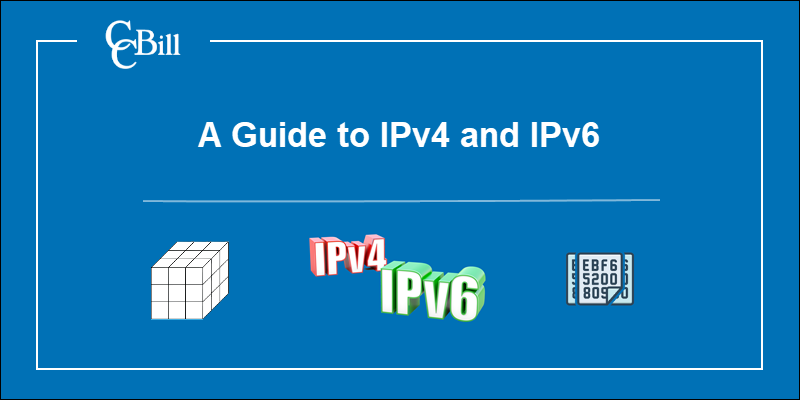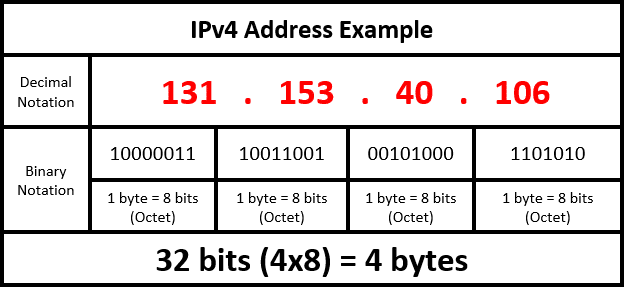Introduction
Over the last few decades, we have seen a tremendous increase in the number of organizations and individuals communicating over the internet. To be able to communicate effectively, each physical or virtual machine needs to have a unique identifier. This identifier is called an IP address.
The available addresses that use the Internet Protocol version four (IPv4) are depleted. Therefore, a new version, Internet Protocol six (IPv6), was developed to address that issue.
This guide explores the differences between IPv4 and IPv6.

What is an IP Address?
Internet Protocol is a set of rules devices use to locate each other and establish communication over a network. An Internet Protocol address (IP address) is a unique string of values given to each device. The function of an IP address is to provide a distinctive identity to each machine on a network.
Differences between IPv4 and IPv6
Ipv4 uses a 32-bit addressing system with four fields of 8-bits separated with a dot (period). The number of fields in a 32-bit based system allows for 4.29 billion individual IP addresses.

Even though this seemed adequate at the time, experts in the field foresaw that this might become an issue. This limitation prompted them to develop a new IP version, the 128-bit based IPv6.

An IPV6 address has 8 separate fields of 16 bits each (4 hex digits), separated by colons (:). The number of fields this system offers increases the number of unique IP addresses immensely.
Note: IPv6 addresses do not occupy the full 128 bits. The recommendation is to shorten IPv6 addresses by suppressing placeholder zeros. These specific rules explain how to omit placeholder zeroes from an IPv6 address.
Address space is the most distinctive feature of IPv6, but it is much more than a simple extension of IPv4. It substantially improves routing, security, and the general quality of packet transfer. This table lists the major differences between the two protocol versions.
|
IPv4 |
IPv6 |
|
Short Supply vs. Near Infinity |
|
|
32-bit address |
128-bit address |
|
Decimal Notation |
Hexadecimal Notation |
|
Fields separated by dots |
Fields separated by colons |
|
4.29 billion unique IPs |
Nearly unlimited number of IPs (340 undecillion) |
|
Manual vs. Auto Configuration |
|
|
IPv4 clients must approach a DHCS (Dynamic Host Configuration server) whenever they want to connect to a network. |
Devices that use IPv6 use an advanced version of the Dynamic Host Configuration Protocol (DHCPv6). Devices can derive and auto-configure their IP addresses even before they establish a connection. |
|
No way to distinguish delay-sensitive packets from bulk data transfers. |
Built-in Quality of Service (QoS). |
|
Fields in the IPv4 header were optional and used infrequently. |
IPv6 eliminates these fields. |
|
Authentication and Encryption |
|
|
Security features are optional and depend on the technical expertise of the end-user. |
IPv6 is much more user-friendly and provides inbuilt (IPSec) encryption and authentication features. |
|
Uses ARP(Address Resolution Protocol) to map to MAC address. |
IPv6 uses a more secure Neighbor Discovery Protocol (NDP). This protocol enables a Layer Two (L2) address to directly derive the interface identifier (ID) of a Layer Three (L3) address and avert spoofing attacks. |
|
Networking Performance |
|
|
Fragmentation is done by both the sending and forwarding routes. |
Fragmentation is done only by the sender. |
|
A single address can mask thousands of non-routable addresses. |
It allows direct addressing because of the unlimited number of unique IPs. |
|
The dot-decimal notation is inefficient on mobile networks. |
The hexadecimal notation performs better on mobile networks. |
|
Unicast, broadcast, and multicast. |
Unicast, multicast, and anycast. |
Why use IPv6?
End-to-end encryption of individual data packets is part of IPv6 by default. Devices are safer against cyber-attacks because of this feature. This service is available on IPv4 as well. However, it was optional, and most users did not use it. With IPv6 this feature becomes even more crucial as secure communication expands in banking, finance, and smart houses.
Note: Switching to IPv6 means that you can only access IPv6 supported websites. Adopting IPv6 applications that operate on dual-stack can enable access to both IPv4 and IPv6 websites.
There are no more private address collisions, as was the case with IPv4. The improved multicast routing allows for more efficient routing. This means that the use of IPv6 has the potential to improve the internet by merely increasing its scale.
Conclusion
This guide helps you understand the differences between IPv4 and IPv6. Most devices still use IPv4, and we have not yet seen a significant shift to IPv6. The cost involved in updating all non-compatible network devices, routers, and software is proving to be an expensive process for service providers.
The positive gains in the number of IP addresses and better security features make the transition to IPv6 inevitable.
